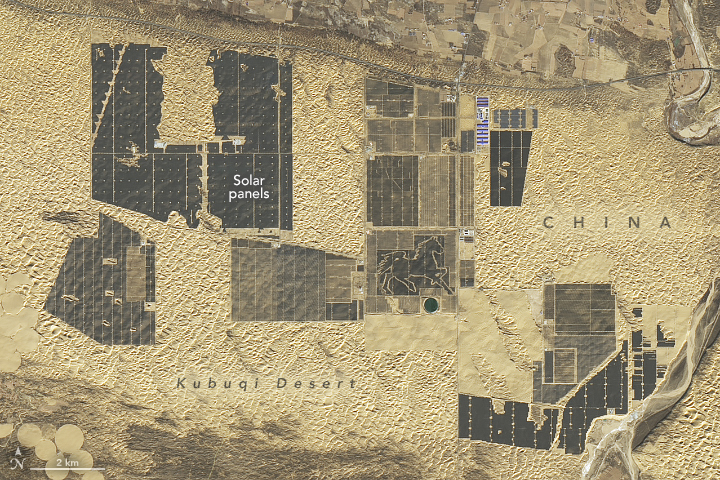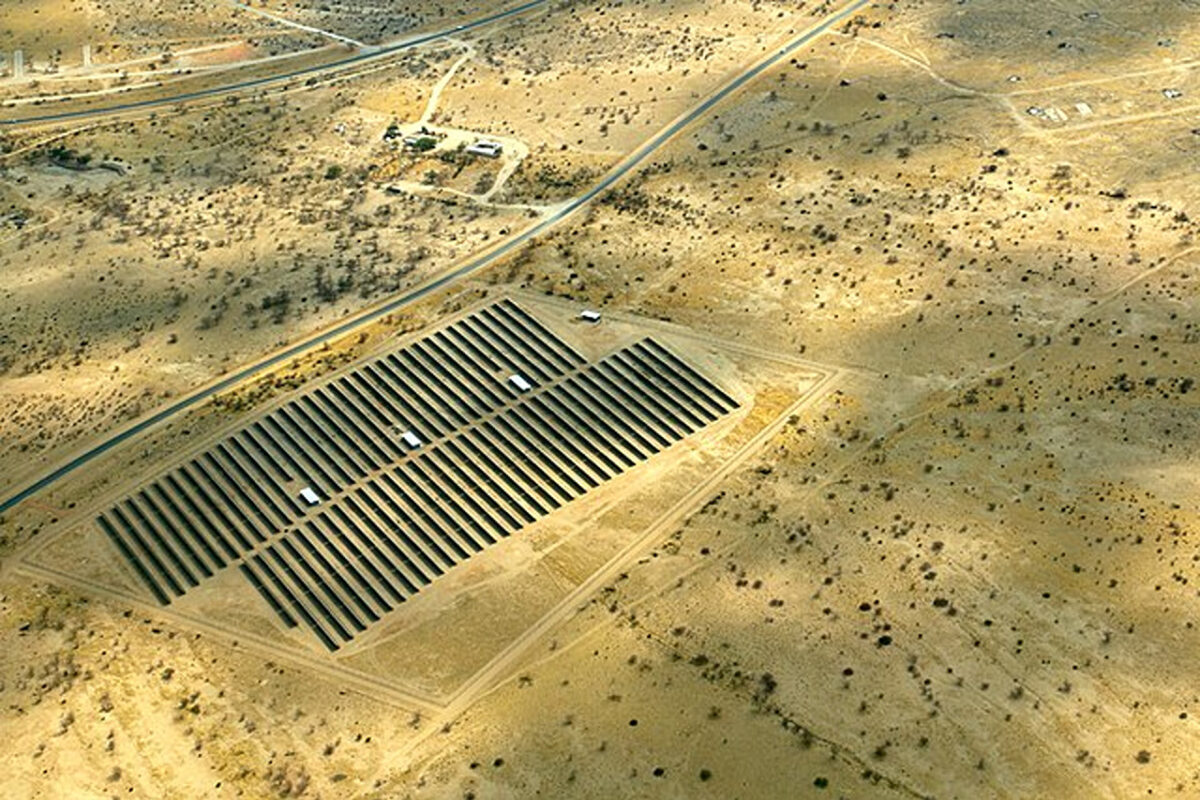NASA has published a new series of pictures of the Great Solar Wall, a giant cluster of PV power projects in Inner Mongolia's Kubuqi Desert.
“Sandy and mostly devoid of life, the Kubuqi Desert in Inner Mongolia once had a reputation for being a ‘sea of death.' More recently, its dune fields have become a sea of photovoltaic possibility, transformed by a surge of newly installed solar panels,” NASA said in a statement. “The construction is part of China’s multiyear plan to build a solar great wall. designed to generate enough energy to power Beijing.”
The US space agency published an image of the desert area before solar panels were installed in 2017, along with two images showing the current deployment. China Daily reported that the region had about 5.4 GW of installed solar capacity as of late August 2024.


The current operational capacity includes a 2 GW facility developed by state-owned China Three Gorges, which is the largest plant visible in the images. State Power Investment Corp., meanwhile, built the 300 MW horse-shaped Junma Solar Power Station, which is also clearly visible in the images.
The site is projected to reach 100 GW of capacity by 2030, spanning about 400 km with an average width of 5 km.

“The Kubuqi’s sunny weather, flat terrain, and proximity to industrial centers make it a desirable location for solar power generation,” NASA said. “Panels are being installed in a long, narrow band of dunes just south of the Yellow River between the cities of Baotou and Bayannur.”
This content is protected by copyright and may not be reused. If you want to cooperate with us and would like to reuse some of our content, please contact: editors@pv-magazine.com.




By submitting this form you agree to pv magazine using your data for the purposes of publishing your comment.
Your personal data will only be disclosed or otherwise transmitted to third parties for the purposes of spam filtering or if this is necessary for technical maintenance of the website. Any other transfer to third parties will not take place unless this is justified on the basis of applicable data protection regulations or if pv magazine is legally obliged to do so.
You may revoke this consent at any time with effect for the future, in which case your personal data will be deleted immediately. Otherwise, your data will be deleted if pv magazine has processed your request or the purpose of data storage is fulfilled.
Further information on data privacy can be found in our Data Protection Policy.